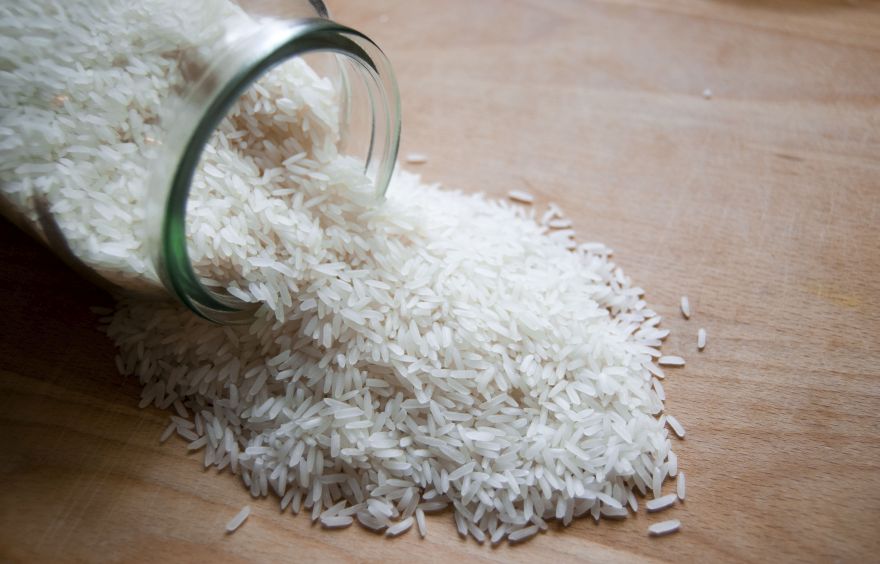There are several types of products that can replace bread in your everyday diet. Rice is one of them. It comes from the area of present India. From there it came to Egypt and Greece, and then to Spain and Portugal. It also gained popularity Africa. In the Middle Ages its expansion reached Italy, then France, and in the seventeenth century it was brought to America. Rice currently comes in approx. 40 000 varieties and is a staple food of more than 1/3 of the world population. Annually, its production reaches 600 million tonnes.
WHY RICE?
Why at all should we substitute bread? This is, after all a cereal product, a source of carbohydrates and it is super easy to use. Nothing could be easier and more convenient than a sandwich. Maybe that’s right, but unfortunately, we most often eat white bread, baked from highly processed flour, and so devoid of any nutritional value, but in turn having high glycemic index and being very caloric, not to mention the high salt content, which we have already too muchin our diet. Often the image is completed with butter and greasy cheese or sausage … ugh!
Rice on the other hand has many more nutritional values, provides a large amount of complex carbohydrates, is a source of potassium, magnesium, iron and zinc. It also contains large ammounts of B vitamins, vitamin E and fiber, but much less sodium than white bread. We find 7-8% protein in it, consisting largely of amino acids (those our organism can not produce itself and must draw from food).
Rice grains do not contain gluten, so it is recommended in gluten-free diets. Often used in highly digestible diets – cooked „al dente”, due to lower glycemic index and fiber, it causes a feeling of satiety and provides a slowly released of energy. Lowers cholesterol, regulates blood sugar levels and improves digestion.
It is recommended for athletes, mainly due to the high content of carbohydrates, but also the digestibility and nutritional richness. White rice proves great in pre-workout meals as quick fuel, that does not burden the stomach. Ideal for both sweet (rice pudding or rice cakes) and savory (rice with vegetables, risotto, sushi or salad base). After training it is best to eat brown rice, which will supplement the loss of important for runners micro and macro elements (magnesium, iron) and vitamins.
NUTRITIONAL VALUES:

TYPES
With regard to shape, we distinguish three types of rice: long grain (over 6 mm in length), medium grain (5,2-6 mm in length), short grain (5-5,2 mm in length).
Long grain rice, when cooked, is loose and mild in flavour. Medium grain varieties contain more starch, making them more sticky and moist, with similarly mild flavour. Most sticky are short grain varieties – almost circular in shape, absorb the water well, realease starch during cooking, clumb together and mold well.
Rice grains are being exposed to the technological process, which consists in threshing, husking and polishing. As a result, the outer layers are removed and we receive white rice. Unfortunately, such rice is devoid of many nutrients that are found in those outer layers. Brown (natural) rice is formed without the polishing of grains, thus it contains much more nutritional values. It takes longer to cook, but it is the healthiest type of rice.
VARIETIES
The most popular rice varieties are as follows:
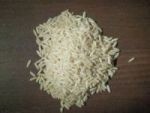 Long grain rice
Long grain rice
Most popular in Poland, a kind of rice that consists of different varieties of Indica. In stores it comes in the form of white rice (purified) and brown (natural and richer in elements – picture on the left). Doesn’t stick.
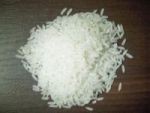 Parboiled rice
Parboiled rice
Also very popular, although few people know what parboiled rice really is. It is obtained from subvarieties of Indica, similarly to the popular long grain rice. Before the separation of surface layers, the grain is exposed to steam under pressure, in which process part of the nutrients are pressed into the grain. As a result we get long grain white rice, which cooks quickly, isn’t sticky, yet retains more nutrients, so it is healthier than classic white rice.
 Jasmine rice (Thai)
Jasmine rice (Thai)
This variety of rice comes from Thailand and has a distinctive, slightly jasmine flavour. It contains more starch than popular long grain rice, hence, when cooked, becomes more sticky. Often used as an addition to curry, particularly suitable for any Asian dishes, both savory and sweet, and desserts (eg. Rice pudding). Currently easy to buy in most stores.
Basmati rice
Long grain variety coming from the areas at the foot of the Himalayas. Very aromatic, white-coloured and loose in consistency, goes well with delicate dishes (eg. Fish and seafood).
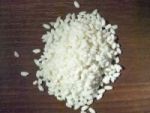 Arborio, Carnaroli rice
Arborio, Carnaroli rice
Both varieties come from Italy. Short grain, with a sweet aftertaste. They contain a lot of starch, so they become sticky, moist and juicy when cooked. For this reason, they are very often used in traditional risotto, but are equally good for desserts.
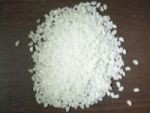 Japanese (sushi) rice
Japanese (sushi) rice
Japonica rice variety. Its Japanese name is uruchi-mai. On the shelves it can be found as rice for sushi, japanese rice or „medium-grain rice”. It is in fact a short grain rice, finer than Arborio, oval and very aromatic. Clumbs togeter after cooking, yet retaining the shape of grains, which is why it is so often used in the preparation of sushi. Dry grains should be almost transparent and equal size – when buying a Japanese rice, make sure it is so, because the are a lot of fakes in stores sold under the name of japanese rice.
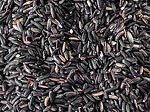 Black rice
Black rice
Variety very rich in nutritional values, it is also called „Indonesian rice”. It contains many antioxidants and large amounts of vitamin E – improves greatly condition of hair and nails. When cooked, it changes colour to purple. It has a distinct, slightly nutty flavor and is often combined with venison or poultry. Expensive and hard to buy, mostly in health food stores and departments.
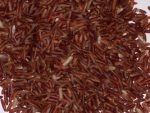 Red rice
Red rice
Medium grain variety with sweet taste and a slightly nutty flavour. Used similarly to black rice. It has a lot of vitamins A, B, D, E, F and high content of zinc, magnesium and iron. Just as black rice, it is expensive and available mostly in health food shops and departments, but it’s worth at least to try both versions due to the very characteristic flavours and a richness of nutritional values.
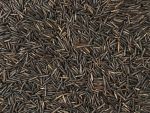 Wild (Indian) rice
Wild (Indian) rice
Wild rice is actually a North American grass (water oats). Similarly to red and black rice, very expensive and „packed” with minerals and vitamins. It has a dark color and distinct taste. Used for oriental and exotic dishes.
American rice
Long grain variety of snow-white grain and a slightly sweet taste. Good for desserts.



